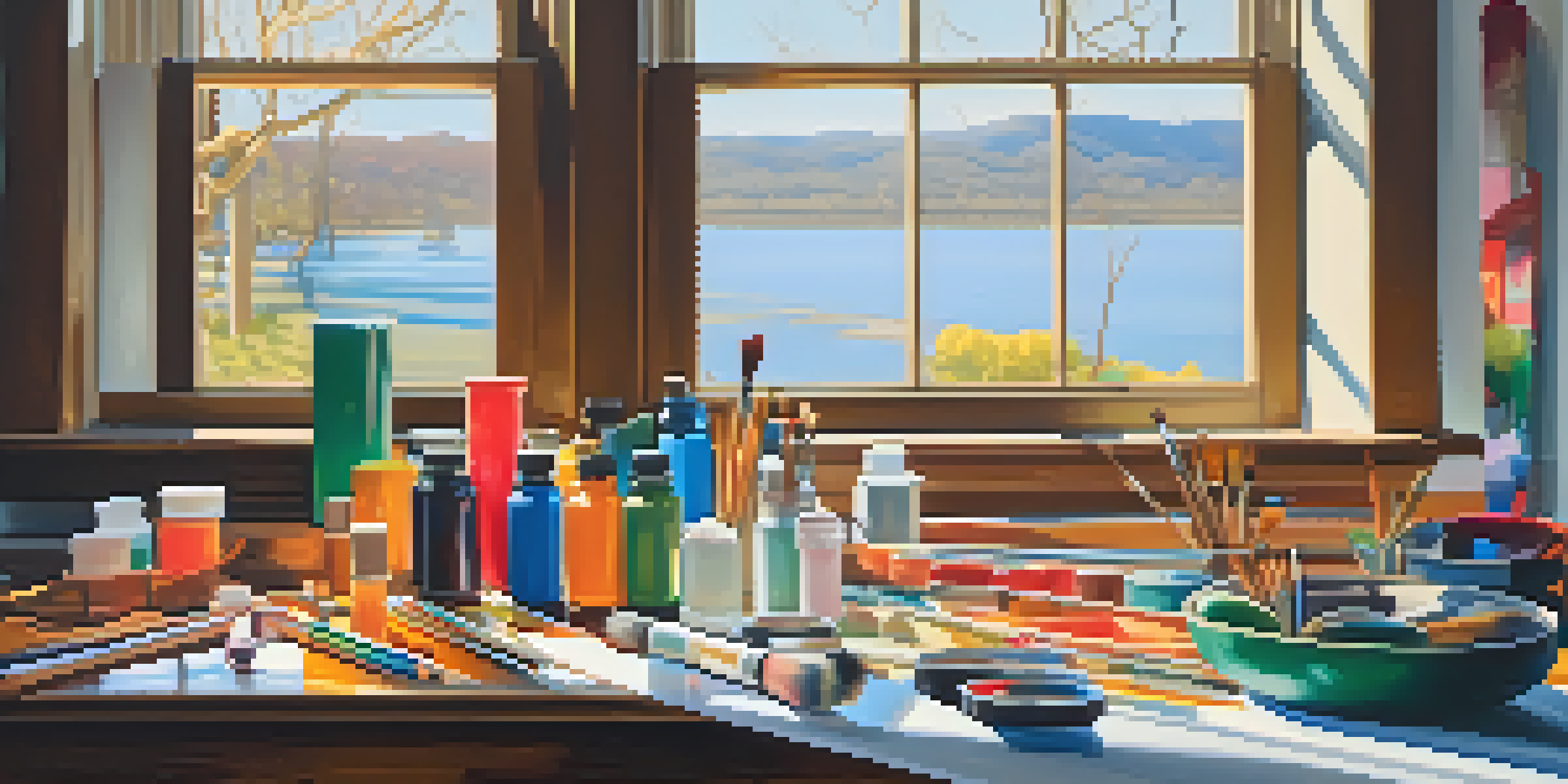Analyzing Light's Role in Color Mixing for Artists

Understanding the Basics of Light and Color
Light is essential in how we perceive color, acting as the medium through which colors are seen. Without light, colors remain hidden in darkness, illustrating the fundamental connection between light and color. For artists, understanding this relationship is crucial as it influences their color choices and mixing techniques.
The Science Behind Color Perception
Color perception occurs when light reflects off an object and reaches our eyes. Different wavelengths of light correspond to different colors, and our brains interpret these signals. This interplay between light and the object’s surface properties determines the colors we ultimately see.
Light is Key to Color Perception
Without light, colors remain hidden, highlighting the essential connection between light and our perception of color.
Additive vs. Subtractive Color Mixing
Artists often use two primary methods of color mixing: additive and subtractive. Additive mixing occurs when light colors are combined, as seen on screens, where red, green, and blue light create white. In contrast, subtractive mixing happens when pigments are combined, like in painting, where colors absorb light and create darker shades.
The Role of Natural Light in Art
Natural light varies throughout the day, affecting how colors appear to the naked eye. For instance, the golden hour before sunset can warm up colors, while midday sun provides a neutral light. Artists should study these variations to understand how to manipulate their palettes and achieve desired effects.
Additive vs. Subtractive Mixing
Artists use additive mixing with light and subtractive mixing with pigments, each creating different visual results.
Artificial Lighting and Its Impact
Artificial lighting can significantly alter the perception of color in artwork. For example, fluorescent lights can create a cooler tone, while incandescent bulbs might add warmth. Knowing the type of lighting used in their workspace helps artists anticipate how their colors will appear under different conditions.
Color Mixing Techniques for Artists
Artists employ various techniques to mix colors effectively, such as glazing and wet-on-wet. Glazing involves layering transparent colors to create depth, while wet-on-wet allows colors to blend seamlessly on canvas. Mastering these techniques can enhance an artist's ability to capture the nuances of light and shadow.
Natural Light Affects Color
The quality of natural light changes throughout the day, impacting how colors appear, which artists must consider in their work.
Practical Tips for Artists on Color Mixing
To improve color mixing skills, artists should experiment with different mediums and light sources. Keeping a color journal can also help track how colors change in varying light conditions. Regular practice and observation will build confidence in mixing and applying colors thoughtfully.
Embracing the Influence of Light in Art
Understanding light's role in color mixing empowers artists to make informed choices. By embracing this knowledge, artists can enhance their work and create visually striking pieces that resonate with viewers. Ultimately, light is not just a tool; it's an essential collaborator in the artistic process.